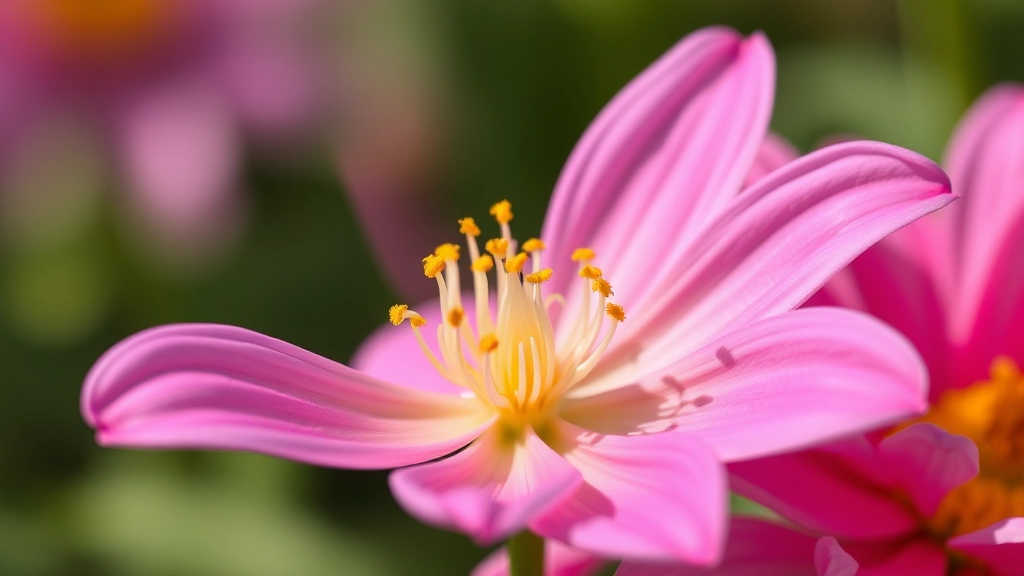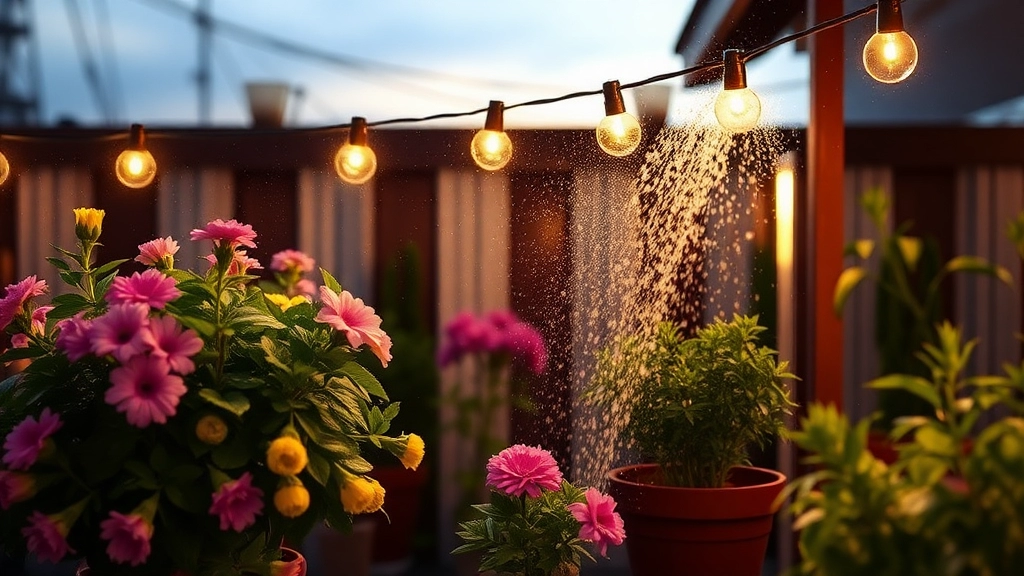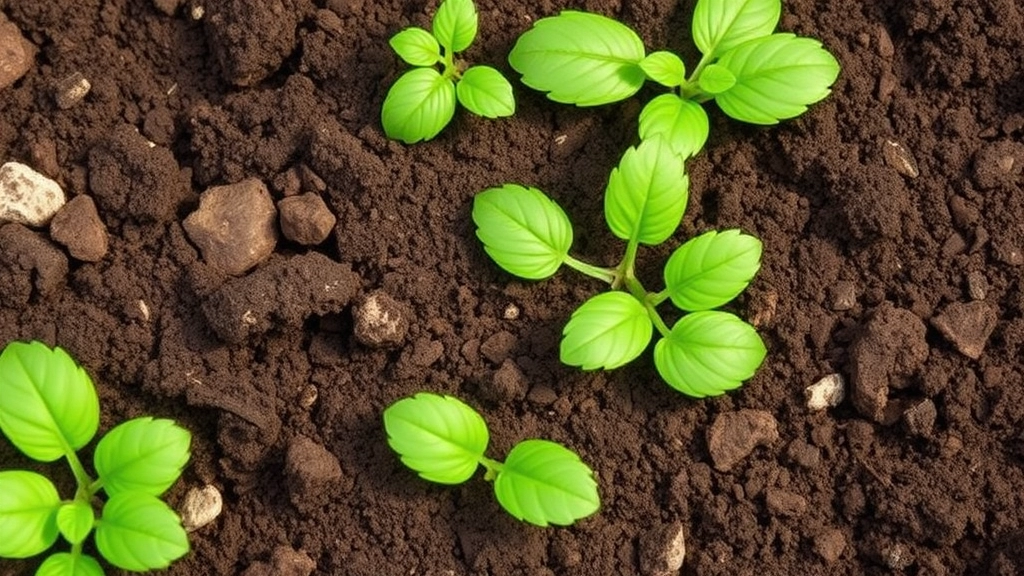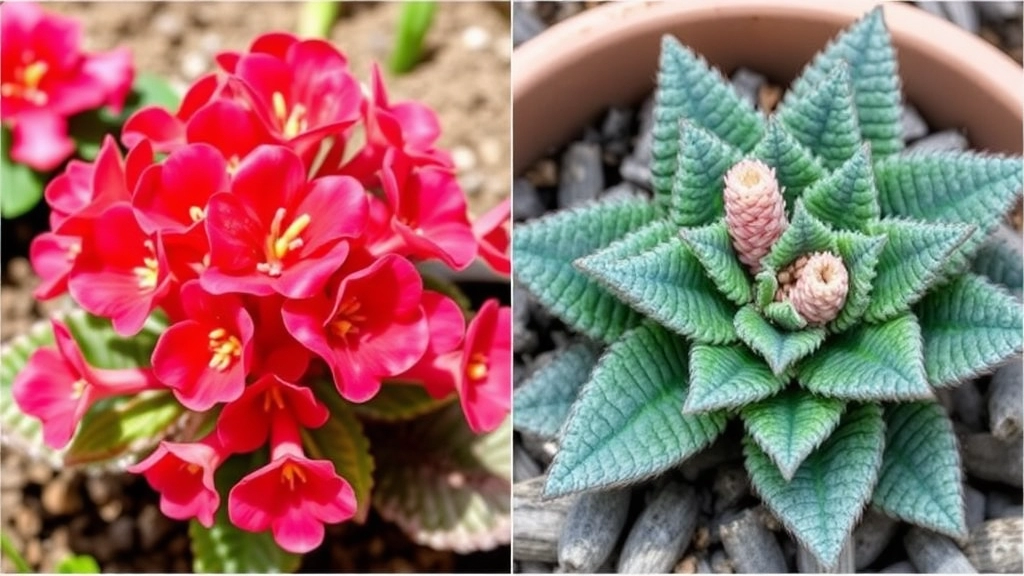Choosing Between Kalanchoe and Calandiva
When it comes to choosing between Kalanchoe and Calandiva, understanding their unique characteristics can make all the difference. Both are popular succulent plants, but they have distinct differences in their origins, flower structures, and care needs. In this guide, I’ll break down the key points to help you decide which plant is best suited for your home or garden.
Flower Structures and Colors
First off, Kalanchoe and Calandiva differ significantly in their flower structures and colors. While Kalanchoe boasts single-layered petals, Calandiva impresses with its multi-layered, rose-like blooms. This makes Calandiva a showstopper for those who want a more lush and vibrant floral display.
Care Requirements
Let’s dive deeper into their care requirements, so you can provide the best environment for your chosen plant.
When exploring the origins and classification of plants, many enthusiasts often wonder where their favourite species come from and how they fit into the broader plant family.
This understanding not only enriches our appreciation but also informs how we care for these plants.
Plants belong to a vast ecosystem, and each species has its unique lineage and classification.
### Plant Classification Basics
– **Kingdom**: All plants fall under the kingdom Plantae.
– **Division**: This is further divided into groups like Angiosperms (flowering plants) and Gymnosperms (non-flowering plants).
– **Class**: Each division is broken down into classes, such as Monocots and Dicots.
– **Order and Family**: These classifications help narrow down the specific characteristics shared among plants.
– **Genus and Species**: The final level of classification identifies the individual plant. For example, *Rosa* for roses.
### Origins of Common Plants
Many popular plants have fascinating histories:
– **Roses**: Originating in Asia, they have been cultivated for thousands of years for their beauty and fragrance.
– **Orchids**: These diverse plants can be found in tropical regions around the world, showcasing an incredible variety of forms and colours.
– **Succulents**: Often hailing from arid regions, these plants have adapted to survive with minimal water.
Understanding the origins of these plants can help you replicate their natural habitat, enhancing their growth and health. For instance, if you’re interested in succulents, you might want to check out the [ultimate guide to growing and caring for succulent plant Kalanchoe](https://planthq.org/ultimate-guide-to-growing-and-caring-for-succulent-plant-kalanchoe/). Additionally, if you’re curious about the various types of succulents similar to Kalanchoe, you can explore [succulent plants similar to Kalanchoe](https://planthq.org/succulent-plants-similar-to-kalanchoe/).
Flower Structure and Colors

Have you ever wondered why some flowers catch your eye instantly?
The structure and colors of flowers play a massive part in their appeal.
Flower Structure
Flowers come in various shapes and sizes, each designed to attract specific pollinators.
- Petals: These are the most visible part and can vary widely in shape—think trumpet-like or delicate star shapes.
- Sepals: Often overlooked, these protect the flower bud before it blooms.
- Stamens and Pistils: The male and female reproductive parts can be found within the petals.
Each of these components works together to create a stunning visual display.
Flower Colors
Now, let’s chat about colors.
The hues of flowers are not just for beauty; they serve a purpose.
- Bright Colors: Flowers like sunflowers and daisies use vibrant yellows and reds to attract bees and butterflies.
- Pastel Shades: Soft pinks and whites often lure in moths and other nocturnal pollinators.
- Unique Patterns: Some flowers have intricate designs that guide pollinators to their nectar.
It’s fascinating how nature uses color to communicate, isn’t it?
In my garden, I’ve noticed that the more colorful flowers seem to attract more visitors, buzzing with life.
Growth Size and Dimensions
When considering plant selection, growth size and dimensions are crucial factors for any gardener.
Understanding how tall or wide a plant can grow helps in planning your garden layout and ensuring that each plant has ample space to thrive.
Key Growth Characteristics
- Height: Plants can vary significantly in height. Some may only reach a few inches, while others can tower over six feet.
- Width: Similarly, width can range from compact varieties to sprawling types that require more room.
Common Growth Sizes
- Small: Up to 30 cm (12 inches)
- Medium: 30 cm to 1 m (12 inches to 3 feet)
- Large: Over 1 m (3 feet)
Examples of Growth Size
For instance, the Dwarf Sunflower typically grows to about 30 cm, making it perfect for small gardens or containers.
In contrast, the Sunflower can reach heights of 2.5 m (8 feet), creating a stunning focal point in larger spaces.
Considerations for Growth
- Spacing: Ensure adequate space between plants to prevent overcrowding.
- Support: Taller plants may require stakes or supports to maintain stability.
- Pruning: Regular pruning can help manage size and encourage healthy growth. For detailed guidance, check out our step-by-step guide on pruning Kalanchoe leaves.
Additionally, understanding the specific needs of different plants can help in achieving optimal growth. For example, if you’re growing Kalanchoe, you might find our complete care guide for Kalanchoe Blossfeldiana useful.
Light and Watering Needs

When it comes to nurturing plants, understanding their light and watering needs is crucial. Many plant enthusiasts often find themselves asking: How much light does my plant need? How often should I water it?
Light Requirements
Different plants thrive in varying light conditions.
- Full Sun: Requires at least 6 hours of direct sunlight daily.
- Partial Shade: Thrives with 3-6 hours of sunlight, preferably in the morning or late afternoon.
- Shade: Prefers indirect light or filtered sunlight.
For instance, succulents and cacti flourish in full sun, while ferns and certain tropical plants prefer the gentle touch of shade.
Watering Needs
Watering is another pivotal aspect of plant care. Overwatering or underwatering can lead to serious health issues. Here’s a simple guide:
- Soil Check: Always check the top inch of soil. If it’s dry, it’s time to water.
- Watering Frequency: Generally, water once a week, but this can vary based on the plant type and season.
- Drainage: Ensure pots have drainage holes to prevent waterlogging.
For example, a peace lily enjoys consistently moist soil, while a snake plant prefers to dry out between waterings.
Temperature and Climate Preferences
When considering the optimal environment for your plants, understanding their temperature and climate preferences is crucial. Many gardeners often wonder what conditions will help their plants thrive.
Ideal Temperature Ranges
Most plants have a specific temperature range that they prefer. Here are some general guidelines:
- Warm-Season Plants: Thrive in temperatures between 20°C to 30°C (68°F to 86°F).
- Cool-Season Plants: Prefer cooler temperatures, ideally between 10°C to 20°C (50°F to 68°F).
- Tropical Plants: Enjoy consistently warm conditions, generally above 18°C (64°F).
Climate Considerations
Different plants also have varying tolerances to humidity and seasonal changes. Consider the following:
- Humidity Levels:
- High humidity is ideal for tropical plants.
- Dry conditions suit succulents and cacti.
- Seasonal Changes:
- Some plants require a period of dormancy in cooler months.
- Others need consistent warmth year-round.
Tips for Maintaining Ideal Conditions
To ensure your plants remain healthy, consider these practical tips:
- Monitor Temperature: Use thermometers to keep track of indoor and outdoor temperatures.
- Adjust Location: Move plants indoors during extreme weather conditions.
- Use Heating Mats: For seedlings, heating mats can provide the warmth they need to germinate.
For more specific advice on how to care for your succulents, check out our expert tips for healthy growth of Kalanchoe paddle plants. Additionally, if you’re curious about the benefits of these plants, read about the natural healing and hydration benefits of Kalanchoe.
Soil and Fertilizer Requirements

So, you’ve got your plant thriving, but what about the soil and fertilizer?
Choosing the right soil is essential for your plant’s health.
Soil Type
- Well-draining soil is a must.
- Potting mix or loamy soil works wonders.
- Avoid compacted or heavy soils that retain too much water.
pH Level
- Aim for a neutral pH around 6.0 to 7.0.
- You can test your soil with a simple kit.
Fertilizer Needs
Now, let’s chat about fertilizers.
- Use a balanced fertiliser with equal ratios of nitrogen, phosphorus, and potassium (NPK).
- Consider slow-release options for a steady supply of nutrients.
Application Tips
- Frequency: Fertilise every 4-6 weeks during the growing season.
- Dilution: Always dilute your fertiliser to avoid burning the roots.
Organic Options
If you’re into organic gardening, go for:
- Compost: It enriches the soil naturally.
- Fish emulsion: A great source of nutrients without the chemicals.
Common Issues and Plant Health
Maintaining the health of your plants can sometimes feel like a daunting task.
What if your flowers are wilting?
Or perhaps you’ve noticed unsightly spots on the leaves?
These concerns are common, and understanding potential issues can be the key to keeping your plants thriving.
1. Pests and Diseases
- Aphids: These tiny insects can sap the life from your flowers. Look for curled leaves or sticky residue.
- Powdery Mildew: This fungal disease appears as a white powder on leaves, particularly in humid conditions.
- Spider Mites: These pests thrive in dry environments, often causing yellowing leaves and fine webbing.
2. Nutrient Deficiencies
- Yellowing Leaves: This could indicate a nitrogen deficiency. Consider using a balanced fertiliser.
- Stunted Growth: If your flowers aren’t growing as expected, they may lack essential nutrients like phosphorus or potassium.
3. Overwatering and Underwatering
- Overwatering: This can lead to root rot. Ensure your pots have proper drainage and allow the soil to dry out between waterings.
- Underwatering: Wilting flowers can signal a lack of water. Always check the soil moisture before watering.
4. Environmental Stress
- Temperature Fluctuations: Sudden changes can shock your plants. Keep them in a stable environment, ideally within their preferred temperature range.
- Poor Air Circulation: This can lead to fungal infections. Ensure your plants have enough space to breathe.
5. Prevention and Care Tips
- Regular Inspections: Check your plants weekly for signs of pests or disease. Early detection is crucial.
- Proper Pruning: Remove dead or diseased leaves to promote air circulation and overall plant health.
- Soil Health: Use high-quality soil and amend it with organic matter to maintain nutrient levels.
For more detailed advice on dealing with common plant issues, you can check out our guide on causes and solutions for brown spots on Kalanchoe leaves. Additionally, if you’re struggling with leggy plants, our article on fixing overgrown leggy Kalanchoe offers expert tips and solutions.
FAQs: Kalanchoe Vs Calandiva
What are the main differences between Kalanchoe and Calandiva?
Kalanchoe and Calandiva are closely related but differ primarily in their flower structure. Kalanchoe typically has single-layered flowers, while Calandiva boasts double-layered, rose-like blooms.
Which one has more vibrant flower colors?
Both Kalanchoe and Calandiva come in a variety of vibrant colors. However, Calandiva’s double-layered flowers often appear more lush and colorful due to their dense petal structure.
Do Kalanchoe and Calandiva have similar light requirements?
Yes, both plants thrive in bright, indirect light but can tolerate some direct sunlight. They do well in environments that provide at least 6 hours of light daily.
How often should I water Kalanchoe and Calandiva?
Both plants prefer well-draining soil and should be watered when the top inch of soil feels dry. Overwatering can be detrimental, so ensure the pots have drainage holes to prevent waterlogging.
What type of soil is best for Kalanchoe and Calandiva?
A well-draining potting mix or loamy soil is ideal for both Kalanchoe and Calandiva. Avoid heavy soils that retain too much water, as this can lead to root rot.
Are there any specific fertilizer needs for these plants?
Use a balanced fertilizer with equal ratios of nitrogen, phosphorus, and potassium (NPK), and consider slow-release options for steady nutrient supply. Fertilize every 4-6 weeks during the growing season and always dilute the fertilizer to prevent root burn.
Can I use organic fertilizers for Kalanchoe and Calandiva?
Yes, organic options like compost and fish emulsion are excellent choices. They enrich the soil naturally and provide essential nutrients without the use of chemicals.
How do flower structures differ between Kalanchoe and Calandiva?
Kalanchoe flowers are typically single-layered with visible petals, sepals, stamens, and pistils. In contrast, Calandiva flowers are double-layered, giving them a fuller, more rose-like appearance.
Do these plants attract pollinators?
Yes, both Kalanchoe and Calandiva attract pollinators like bees and butterflies, thanks to their vibrant colors and flower structures.
References
-
Flower – Plant Reproductive Organ
-
Flower Garden Design
-
Understanding Plant Light Requirements
